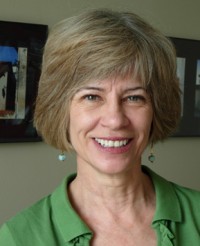Light from Heaven
You think your church has problems? Imagine your church building closing and your denomination telling you that it can’t afford to fund a pastor. Imagine trying then to keep alive the vision of a vital congregation and taking on the cleaning and maintenance of the building while you wait—for 40 years. Eighty-six-year-old Agnes Merton is that visionary in Light from Heaven, Jan Karon’s latest book in the Mitford series.
Agnes and her son clean and polish pews and floors in a sweet, rustic chapel somewhere in the Blue Ridge Mountains of North Carolina, never wavering in their trust that one day a pastor will show up. Seems like a long shot. But retired Episcopal priest Tim Kavanagh has just received the call to go to Holy Trinity: “Get it up and running, ASAP,” says his bishop. Everything will be all right now. We’re in Mitford.
I enjoyed reading At Home in Mitford when it came out 12 years ago, and I followed the reappearing characters through a couple of books. But then I abandoned Mitford, taking a pass on the sequels and spin-offs. Apparently others took my place: books in the series have sold over 20 million copies.
When I picked up Light from Heaven, I planned to scan it, see if I recognized the characters and then leave it. Instead I found myself slowing down and, as I did at the beginning of the Mitford adventure, happily trolling through the entire book.
I recognized most of the characters. Father Tim, the sainted Episcopal priest, isn’t happy unless he has lives to fix, projects to mastermind and a stray child to take in and nurture. “The beautiful Cynthia,” his conjugal angel, has come into the later years of his life as artist, companion and almost fawningly supportive rector’s wife. Their life together is so blissful that even watching Cynthia unwind pink plastic rollers from her hair triggers Father Tim’s gratitude for their marriage. Then there’s the now-deceased Miss Sadie, who gently haunts Light from Heaven because she hid $9,000 somewhere in her 1958 Plymouth before she died. In addition to Agnes, new characters include Jubal Adderholt, a crusty hermit from up in the mountains who insulates his cabin by nailing squirrel pelts to its exterior.
No female priests roil the smooth waters of Mitford, at least not in the books I read; that might bring in conflict and meddle with the steady, modulated plots and cozy resolutions. The folks up the mountain are thrilled to find copies of a 1928 prayer book in the church cupboard; Karon, who is a conservative Episcopalian, would also like the church and prayer books to remain as they were in 1928. In 1998, Karon voiced her views in a letter to the denomination that implored leaders to turn from “a life based on vain, new creeds that suit your fancy.”
In Mitford, which is based on the town of Blowing Rock, North Carolina, where the author lived until five years ago, Karon’s sense of gender appropriateness translates into female characters who are traditional and caricatured: saintlike (Cynthia), eccentric (Miss Sadie) or reptilian (the manipulative nonbeliever Edith Mallory). Edith (prepare yourself, dear reader!) once tried to seduce sweet Father Tim. In the latest novel she has fallen into a well-deserved coma, which is no surprise to faithful fans who understand that bad things may need to happen to bad people. Even now, with Edith sidelined and silenced, saying her name around sweet Father Tim is like muttering “Voldemort” around Hogwarts: the utterance makes Tim tense up with stress and embarrassment. Fear not, Father Tim. God’s still working on ole Edith.
Some readers recoil from the clichés and truisms of Mitford literature; others swallow them whole without wincing. A Kirkus review of Karon’s Common Life: A Wedding Story calls it “a slight story indeed, filled with pious twittering about the joys and responsibilities of Christian marriage.” But why let one critical review stop you from the pleasures of twittering?
The differences between one Mitfordite and another are not all that great. I don’t remember meeting anyone in the series who was not North Carolina Anglo. Even the orphans and the poverty-ridden characters from the hills are gentle, saddened shadows of the hearty Mitford breed. Diversity is not the goal. In fact, Karon’s goal may be the opposite: a comfortable homogeneity that calms and soothes.
So am I reading Mitford to be soothed? Because it’s an escape to a comfort zone? Sure. And Mitford is probably no more dangerous than an escape to American Idol or spectator sports—as long as I remember I’m reading fiction. The Mitford series is a legitimate escape for church leaders buffeted by volunteers’ resignations, walls that vibrate during praise services and other familiar stressors. Mitford is also an escape from the culture. Yes, we know that just outside Mitford is an ugly strip mall, a megachurch that’s pulling members from Father Tim’s Holy Trinity, and even a porn shop with a flashing neon sign. But they stay there—outside of town, outside of the story.
I also visit Mitford because I find people who are keeping technology at a safe distance. Father Tim occasionally struggles with a cell phone, but it will never replace his one-on-one visits with nearly everyone in town, or his end-of-the-day review of events with his wife. Face-to-face communication is still standard behavior in Mitford, and my brush with its nontechno-world is refreshing.
I’m also fond of the scenes at Lew Boyd’s Exxon station, where the locals hang out, enjoying conversation and a sandwich. There is no set time for them to meet, just an understanding that they’ll all be there around noon. One brings leftover lasagna; another, mystery meat; and our hero Tim has a chance to play hooky from a diabetic’s restricted diet and patronize the sandwich machine for ham and cheese on white.
“Hooboy!” one says of another man’s long hair. “Pretty soon you’ll be whipping that back into a ponytail an’ wearin’ a earring.” One man offers to buy another a stale cup of coffee. When Father Tim arrives, J. C. says, “About time you showed up. . . . My fish sandwich is going south.” Father Tim notes that Mule’s aftershave will “effectively mask any offensive odors within, loosely, a city block.”
The service-station banter is evidence of long-standing friendships that are respected with the gift of a couple of hours of shared time each week. The scenes tug at my memories of small-town hospitality in southern Illinois, circa 1960. I realize that since I left the town four decades ago, I’ve missed knowing small-town life with all of its warts, woes and sins.
I also celebrate that Karon relationships are nourished in slow time. Father Tim slows down to honor the sacredness of each encounter, believing that he and another are only a subset of a larger and more glorious gathering of friends and neighbors.
Is it possible to find churches that invest in slow time, over time? Are we willing and able to slow down for someone else, to know a neighbor over a stretch of years as a Christian friend? That’s the prayer and the hope. In slow time exchanged with others over years, I hope to work, like Father Tim, toward building a church that represents Christ to everyone it meets.






